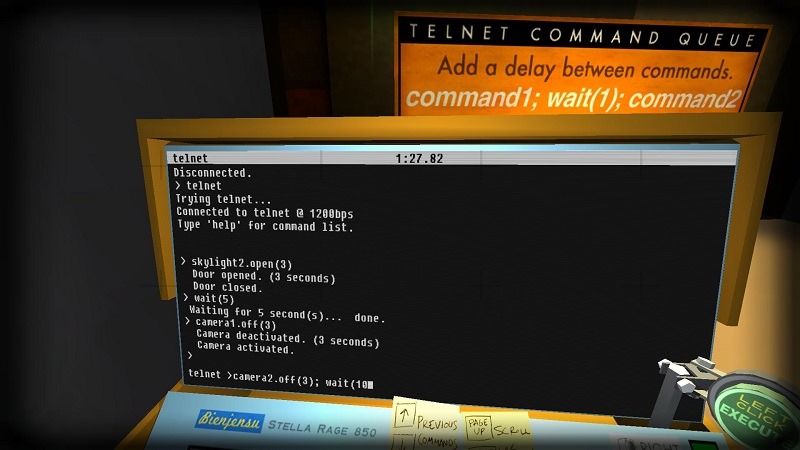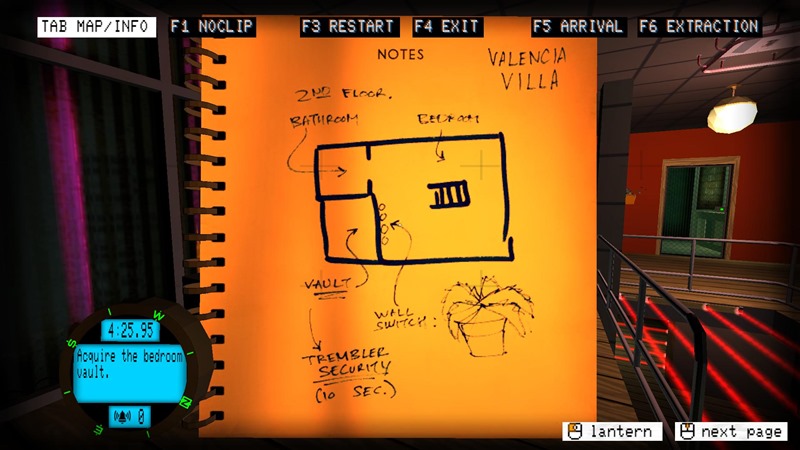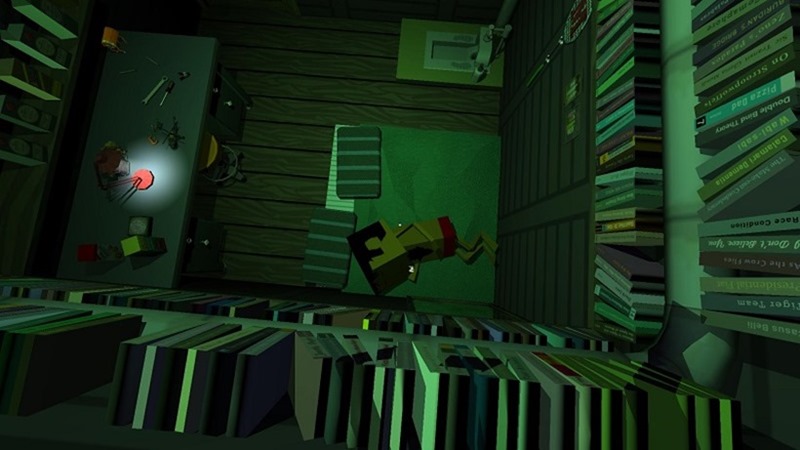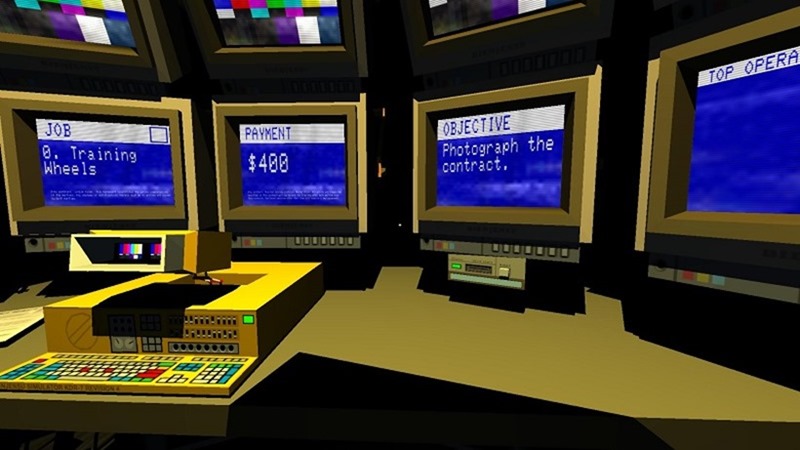
There’s a reason I’m no programmer today. I tried my hand at coding straight out of high school, and I disliked it. Actually, disliked is the wrong word – I hated the stuff with the fire of a thousand suns. Let’s just say I was less than ecstatic when Geoff handed me a review copy of Quadrilateral Cowboy – the latest title from indie developer, Blendo Games. When I first saw the game a few weeks ago, I thought it was a puzzler that required programming knowhow. Thus, I was all but guaranteed to suffer when I played it.
That couldn’t be further from the truth. As it turns out, Quadrilateral Cowboy is excellent. It has honestly been one of my favourite gaming experiences this year. And no, you don’t need to know anything about coding to enjoy it yourself.

Quadrilateral Cowboy starts out by teaching players very basic syntax, which they’ll later learn to string into the complex commands required to solve the game’s various puzzles. Not once did I feel overwhelmed, or inundated with information throughout my playthrough.
The teaching aspect of the game is handled very well actually. At the very beginning for example, players have access to a portable device that can be plugged into data jacks. When done, the device displays the various available commands that are available, and all the player has to do is select the appropriate one to execute. Soon though, they will have access to their own deck – a portable computer that can be deployed anywhere – which they’ll use to manually input their own commands.
Having to literally type in words to do something mundane like opening a door sounds boring on paper, but I assure you, it’s surprisingly satisfying. It helps that the sound of typing in game has an enjoyable clack to it. If you have a mechanical keyboard, you know exactly what I’m talking about.

In Quadrilateral Cowboy, you’ll undertake various heist missions, which is why you’re doing sneaky stuff like deactivating laser beams or opening up doors and gates in the first place. You start out with nothing more than your deck, but as you progress through the game, you get access to more tech that helps you take on bigger, more complicated jobs.
The weevil for example, is a teeny tiny robot that can fit through small gaps or tight spaces that you might not be able to yourself. It, like almost everything else, is controlled via the deck. You can make it move forward, turn, zoom its camera in and out, and more.
So to give you a clearer picture, let’s say I’ve just dropped the weevil into a room through a crack in the roof. I’d then place my deck and CCTV screens nearby, connect to the little device, and activate the video feed to see through its eyes. I’d then type something like ‘Go 50’ to make it move forward (50 being the distance I want it to travel). I could queue up a string of commands if I wanted to too. It would go something like, ‘Go 50; turn 30; jump; go 60; turn –90’. Once I’ve navigated it to a data jack, I can then get it, plug in and open up a nearby door that’ll then grant me entry into the room.

Getting all of this right does take some getting used to, but not once did I feel like I was being overloaded with information. Heists are presented in bite-sized portions, which gives players a fair amount of time to get used to new tech before the next cool gadget finds its way into their arsenal.
This ends up being a bit of double-edged sword unfortunately. One problem I have with Quadrilateral Cowboy is that by the time I learnt how to use some cool new piece of technology effectively in a real life heist, the next one was already being introduced. After completing the first act, I realised that I’d been playing a very lengthy tutorial of sorts. My hand was being held tight, and I was being taught everything I needed to know in detail for the much later, more complex portions of the game.
This is not necessarily a bad thing, but I do feel that it could’ve been handled somewhat differently. I think the opening portion of the puzzler would’ve benefited from adding a little more depth or length to some heists. That, or Blendo Games could’ve maybe added a few more missions in-between each introduction of new gadget, instead of “rushing” through them.

Other than that minor complaint though, and the few crashes here and there (which will be fixed via a patch soon hopefully), I don’t have much else to criticise. Quadrilateral Cowboy had me hooked from beginning to end, for the full 5 hours it took me to complete it. I was immensely sad to see its credits roll! Thankfully, there is mod support, so I’ll definitely be back once the community starts piecing their own puzzles together.
At the very least, I feel I can confidently state that Quadrilateral Cowboy provides an unusual, albeit enjoyable experience. It’s not one that I think everybody will enjoy mind you, but if you’ve got a thing for puzzlers, or coding, or 80s aesthetics, or heists, or classic music, or tales that are told inexplicitly, OR all of the above, then I’m all but certain that you’re going to love Quadrilateral Cowboy. If you’d told me a few weeks ago that I’d find satisfaction with a title that required basic command inputs to solve puzzles, I would’ve laughed in your face.
All I can say now is this: Quadrilateral_Cowboy.recommend(yes)
Last Updated: July 26, 2016
| Quadrilateral Cowboy | |
|
A game about conducting heists from behind a pc screen? It sure sounds mundane and complicated. Blendo Games though, have somehow managed to pull it off with ease in Quadrilateral Cowboy. They’ve put together a highly polished, surprisingly enjoyable product - one which every gamer should at least consider playing at some point.
|
|
|---|---|
| Quadrilateral Cowboy was reviewed on PC | |
|
81 /
100
| |





















Admiral Chief - Check
July 26, 2016 at 19:47
GG Figgle!
hairyknees
July 27, 2016 at 08:33
<3